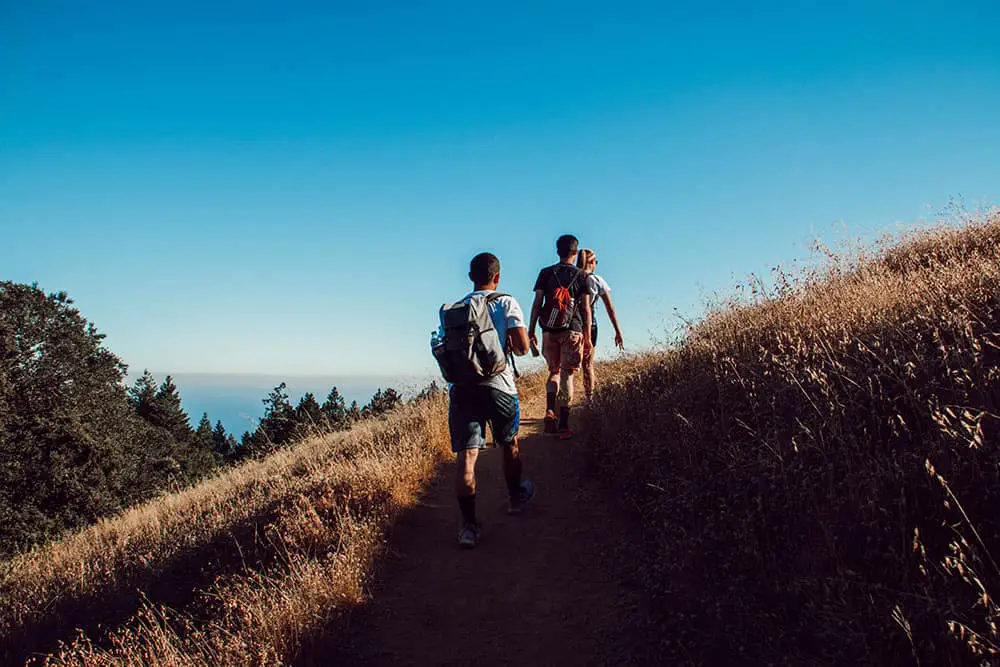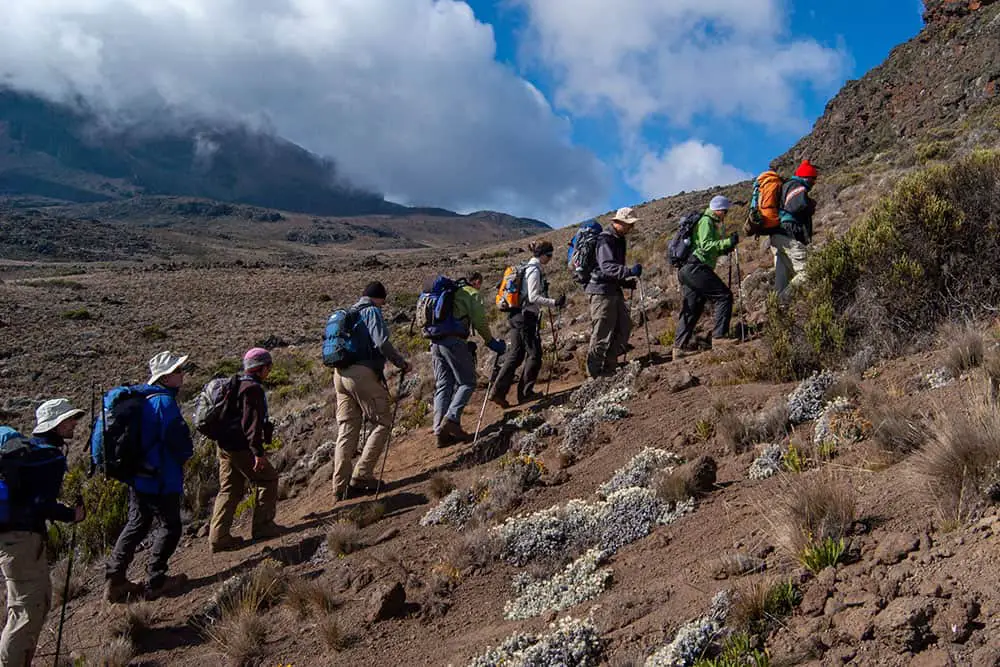When you’re hiking, it’s important to enjoy the views, but it’s just as important to know how fast you’re going.
If you’re just starting out hiking, or haven’t considered your pace level before, you may be wondering if your hiking pace is good or not.

In this article, we’ll cover what a good hiking pace is, speed factors, and how to measure your pace.
What Is A Good Hiking Pace?
Your average pace is how quickly you walk over a certain distance. Most hikers walk between 2-3 MPH (3.2 – 4.8km).
A 3 MPH pace is considered very good, however, the pace you should be aiming for depends on your skill level. No one can tell you what an ideal pace is, as the answer is purely personal.
You can figure out what a good pace is for you by setting goals. For example, you could aim to cover more ground over a quicker period. As long as you’re improving, you’ll be at a good pace for your needs.
For the most part, aiming to cover 12-18 miles in a day will mean you’re at a decent pace. However, if you’re pushing yourself, more experienced hikers may aim to cover 25 miles a day.
Generally, 2 MPH is a good speed, 3 MPH is great, and 4 MPH is very fast. Remember that this is just a rough guide. The speed you’re aiming for should reflect your own experience.
Why Is It Important To Know My Average Pace?
Some might want to walk leisurely, while some want to cover as much ground as they can. No matter what you set out to do, it’s important to know how fast or slow you’re hiking. Here are a few reasons why.
Avoid Getting Worn Out
If you know how fast you normally walk, you won’t set yourself up for failure. For example, you might know that it takes you 3 hours to cover 6 miles of terrain.
If the trail you’re taking is 9 miles on steeper terrain, and there are only a few hours until it gets dark, you’ll know when to turn back and try again another day.
Weather
Unless you live in the middle of a desert, you’re bound to get some rainfall now and then. When you know your hiking speed, you can check the forecast and set out on your hike.
Taking your pace into account, you’ll know what time to leave before getting soaked. You can do this for all types of weather.
For example, you might want to avoid a midday heat wave during summer. Knowing your pace means that you can set out early, get a hike in, then leave before it gets too hot.
Safety
If you’re planning on taking a longer overnight hike, knowing your pace means that you can plan how quickly you’ll get to the campsite.
You’ll also avoid hiking before it gets too dark, as well as any potential dangers that could occur.
What Affects The Speed Of A Hike?
There are lots of factors that affect how fast you hike. There are rougher terrains and steeper climbs.

Some carry more on their backs than others. Even if you cover the same hike, you’re going to have a different experience each time. Below, we’ve listed some things you should know before your next outing.
Slope
When you’re hiking, it’s rare to walk on completely flat ground. Mountains, hills, and dips in the ground are examples of different slopes.
When you walk on a steeper incline, your pace changes, as it becomes harder to walk uphill. Your pace slows down, roughly a third for every 5.5 degrees incline.
Similarly, walking downhill means that your pace speeds up. Compared to walking on a flat surface, your pace will vary when walking uphill or downhill.
Pack Weight
The amount of supplies you bring with you affects how much weight you carry.
Simple day-long hikes need fewer supplies than when hiking over several days. The more weight you have, the harder your body has to work to move. This can slow your pace down.
If you’re finding it difficult to improve your pace, have a look at what you’re bringing in your pack.
If you want to increase your pace, you’ll want to pack lightly, carrying as little as possible. You could also try bringing your car and leaving some supplies in the trunk.
Terrain
Your pace will slow down when walking on rough terrain. It’s easier to walk along flat, well-kept ground. Rocks, off-trail hiking, and mud can slow you down, as you have to take more care when hiking.
Before setting out hiking, remember to research trail conditions. You can do this online, but you can also try reading trip reviews, looking at the weather forecast, and phoning information stations.
How Can I Measure My Hiking Speed?
Manually
You can measure your pace manually with a pen, notepad, and a watch. You can gauge your pace by measuring how long it takes you to cover your whole hike. Then, divide the total time taken by the distance covered. Check out our article on calculating average hiking speed manually here.
However, you’ll understand your performance better by breaking the hike down into sections.
You do this by marking out two points on your trail. Then, measure the time it takes to get from the first point to the last point. Divide this time by the distance between the poi
nts. Do this for different slopes (uphill vs downhill), terrains (rough vs flat), and stages of your hike (beginning vs end).
GPS Apps, Watches, And Trackers
You can download many apps that can tell you your pace. These include Map My Walk, Strava, and Hiking GPS. Most of these are free, but if you prefer, you can pay for some added benefits.
GPS watches are the best way to measure your pace. These are extremely accurate, as they record your distance, time for different stages of your hike, and estimate how many calories you’ve burned.
Unlike most smartphone apps, they can also tell you the temperature, elevation, and barometric pressure. These are expensive, but if you hike regularly, they could be a good investment.
If you’re looking for a cheaper option, there are many fitness trackers available to buy.
Most of these are worn like a watch, measuring your distance, pace, and step count. However, these aren’t as accurate as GPS watches, so you won’t get a fully correct pace reading.






[…] Folks have discovered that Michigan is the place to explore and go hiking because it has unique locations where great memories can be made like nowhere else in the country. So whether planning for an individual, group, or family hike, Michigan should be the first place that should be considered. Hiking should relax the mind and offer a physical workout. Here’s a piece of good information on what is a good hiking pace. […]